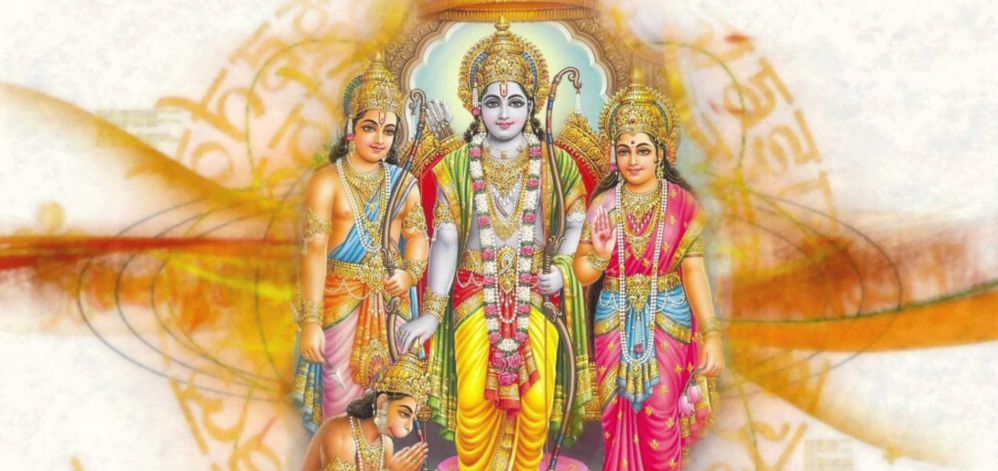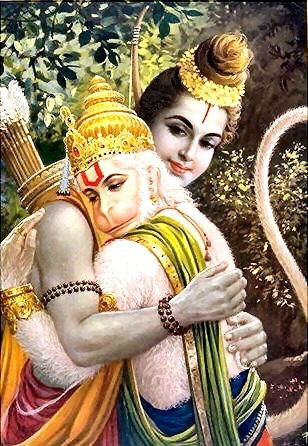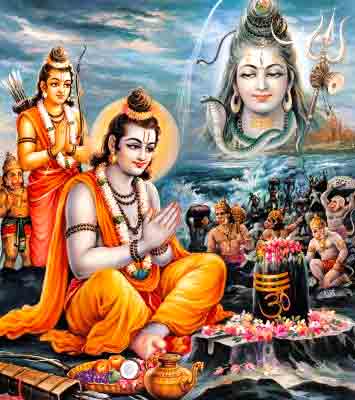No products in the cart.
The Ramayana, written and composed by Valmiki, is one of the greatest works of literature in the history of ancient India. It has survived the test of time, and still continues to be one of the most critically acclaimed works of all generations. It strikes a chord with everyone’s lives and touches their inner soul with subtle delicacy. It has proved to be a classic in the standards of world literature and has been translated in over 300 languages. It is also one of the largest ancient epics in word literature, comprising of about 24,000 verses, divided into seven books (Kandas), consisting of 500 sargas (chapters). The importance of Ramayana in both Indian and world literature is a matter of great pride for India’s rich and diverse heritage. Writers of all generations have been greatly inspired by Valmiki’s piece of genius, and have created many works based on his great epic. One of the most popular reproductions of Ramayana has been Ramcharitmanas, written by Goswami Tulsidas.
Ramcharitmanas, is composed by the 16th century Indian bhakti poet Goswami Tulsidas. The word Ramcharitmanas means the lakes of the deeds of Rama. The entire story consists of poems in a mellifluous manner. The entire story is a narration by Lord Shiva to Goddess Parvati. The word ‘manas’ refers to the lake conceived in the mind of Shiva. Ramcharitmanas has proved to be as popular as Valmiki’s Ramayana. It is also regarded as one of the literary works of Hindu mythology. It has proved to be as popular as Valmiki’s Ramayana. Through this article, I attempt to give an insight into the major and critical differences between Valmiki’s Ramayana and Tulsidas’ version of Ramayana, Ramcharitmanas.
When was Valmiki Ramayana and Tulsidas’ Ramcharitmanas Written?
Valmiki originally wrote The Ramayana in Sanskrit in between 1500 and 500 BC. The exact date of the book’s production is unknown. Estimates have been from the oldest manuscripts found in Nepal, dated to 11th century. Ramcharitmanas was written by Goswami Tulsidas in the 16th century AD, in Awadhi dialect of Hindi. Tulsidas however was a very learned scholar of Sanskrit. He chose to write his version of Ramayana, in Awadhi, so as to tell the tale of the great hero Rama, in a local language, so as to make it accessible to everyone. Awadhi, at that time, was the language used in general parlance, in major parts of central and North India. Sanskrit, was then used and understood only by the scholars and upper class. In fact, at that time, many Sanskrit scholars had lambasted Tulsidas for reproducing a work of such brilliance and sanctity, in a vernacular language. However, Tulsidas remained firm in his purpose of simplifying the great knowledge contained in the stories Valmiki’s Ramayana. It is then, in the 16th century when the story of the Rama spread widely in north India and celebrated with even more participation from the local crowd.
The 7 Kandas of Valmiki Ramayan and Ramcharitmanas
Valmiki’s Ramayana is written in seven Kandas(books) known as Bala Kanda, Ayodhya Kanda, Aranya Kanda, Kishkindha Kanda, Sundara Kanda, Yuddha Kanda, and Uttara Kanda. Even Ramcharitmanas is divided into seven books, or Kandas. However, Tulsidas renamed the Yuddha Kanda as the Lanka Kanda. This is one of the major differences between Ramayana and Ramcharitmanas.
Valmiki Ramayana vs Tulsidas’ Ramcharitmanas – Lakshman Rekha
The Lakshmana Rekha is not depicted in Valmiki’s Ramayana. Valmiki does not mention the existence of any line known as a Lakshmana Rekha. The episode on Sita’s abduction is contained in the Aranya Kanda. In chapter 45 of the book, the scene of Lakshmana, moving away from the hut, after folding his hands before Sita. He couldn’t bear her harsh criticism regarding not going to support Rama, who went out alone in the forest to fetch the golden deer for Sita. Lakshmana was reluctant to leave Sita alone, but he had to, when he saw Sita very tensed. The verses in chapter 45 and sarga 29 show that Lakshmana just moved away from Sita, with his hands folded. There was no verse depicting the presence of any kind of line. Tulsidas in Ramcharitmanas introduced the popular story of the Lakshmana Rekha, which was a perimeter drawn by Lakshmana around the hut, inside which any being or wild animal from outside would be destroyed. He drew this line to ensure Sita’s absolute protection within it. This story of the Lakshmana Rekha is really popular, and people still use it as a metaphor to signify situations where in a line should be crossed under no circumstances.
 Valmiki Ramayana vs Tulsidas’ Ramcharitmanas – Lord Rama
Valmiki Ramayana vs Tulsidas’ Ramcharitmanas – Lord Rama
Valmiki had depicted Rama to be a human being, as ‘purshottam’, in Ramayana, however Rama is depicted as the incarnation of Lord Vishnu, in Ramcharitmanas, by Tulsidas. Thus, in Ramayana, Rama acquired all his skills primarily through practice and devotion, and in Ramcharitmanas, Rama is assumed to already possess all kinds of powers and virtues, as he is shown to be the incarnation of God Vishnu himself and his were described as the right way to establish Dharma in the world by removing evil.. There is not even a single instance in Valmiki’s texts that portrays Rama as a form of God. In fact Valmiki’s Ramayana has Lord Ram as Maryada Purshottam, meaning the best of all men having the best set of virtues.
Valimiki’s Ramayana ends when Rama’ completes the journey of his mortal body by drowning himself in Saryu river after he was saddened by the absence of Sita and Lakshmana. Sita was vanished into mother Earth and Lakshmana had drowned himself in Saryu river.
RamCharitManas ends with the birth of twin sons Lava and Kusha to Ram and Sita. It never mentions the death of Lakshmana or How Sita was disappeared.
Valmiki Ramayana vs Tulsidas’ Ramcharitmanas – Hanuman
Even the depiction of Hanuman is quite different in both these versions. In Ramayana, Hanuman is depicted to be a person belonging to the Vanaras tribe. Vanaras were a tribe who lived in the dense forest, during the period of Ramayana, in the central location of the Indian peninsula. The dense forest area was known as the Dandaka Forests. Some of the tribe members lived in Dandaka forests, while their stronghold was the Kishkindha. The Vanaras tribe, during that period, had spread across to many parts of the Indian subcontinent. The members of this tribe were known to possess special powers. Tulsidas in his text of the Ramayana, depicted Hanuman as a monkey, all throughout his books. Nevertheless, that doesn’t mean that he didn’t respect Hanuman as much as Valmiki. Tulsidas was a great devotee of Hanuman. He is the composer of the greatest hymns devoted to Hanuman, the Hanuman Chalisa. He wrote an entire book containing prayers to Hanuman, the Hanuman Bahuk.
Sita in Valmiki Ramayana and Tulsidas’ Ramcharitmanas
The characterization of Sita is also quite different in both the versions. Both have the same base of Sita’s character, of her being the pious woman, loyally devoted to her husband, and as a woman who puts dharma above everything. The aspect that they differ in is Sita’s outlook. Valmiki has portrayed Sita to be a very strong and outspoken woman, sometimes even aggressive and as an equal to her husband, Rama. In Ramcharitmanas, she is shown to be more of submissive, reticent and soft spoken woman. This stems from the role of women in society in the 16th century, the period during which women were given a subordinate position to the men. The women during that period did not have a say in worldly matters and were oppressed in all fields. So, Tulsidas had to portray Sita as submissive contrary to her attitude in Valmiki’s Ramayana.
As per Valimiki’s Ramayana, The abduction and sufferings of Sita were real. She was kidnapped by Ravana by forcefully dragging her to his chariot. Rama rescues Sita and asks her to prove her purity to the world by taking Agni Pariksha.
As per RamCharitManas, real Sita was never kidnapped. Rama foresees the abduction of Sita and creates the clone of Sita and sends the real Sita to Agni Deva. The Agni Pariksha was just a way to exchange clone of Sita with real Sita.
According to Ramayana King Janaka never organized Sita Swayamvar as a mass function, Instead, whenever some mighty person used to visit Janaka, He used to show them Shiva Dhanusha (Bow of Shiva) and ask them to lift it. Once Vishwamitra visited Janaka with Rama and Lakshmana, then Janaka showed the bow to Rama. Lord Rama lifted the bow and he was married to Sita.
As per RamCharitManas, Swayamvar was organized by King Janaka for Sita and there was a contest to lift the bow of Shiva. Sita will choose the person as her husband who can lift the bow without breaking it. Nobody could lift the bow until Rama came to lift it. He lifted it but broke it in the process. After hearing this Parashurama got very angry and Rama asked to forgive him.
Dasharatha in Valmiki Ramayana and Tulsidas’ Ramcharitmanas
Another major difference between the two texts, is a very controversial one. Valmiki had depicted Dasharatha to have 350 wives, while Tulsidas mentioned that he had only three wives. There many instances in Valmiki’s Ramayana which prove that King Dasharatha had 350 wives. In Ayodhya Kanda chapter 34, verse 13 means that there are three hundred and fifty women encircling Kaushalya, steadfast in their vow, that is their devotion to their husband. There are many such verses in Ayodhya Kanda that depict that there are 350 women dedicated to Dasharatha. Tulsidas, however, had made it clear in Ramcharitmanas that King Dasharatha had only three wives, Kaushalya, Sumitra and Kaikeyi. Rama, Lakshmana, Shatrughna and Bharata were the children to these three wives of Dasharatha.
 Shiva in Valmiki Ramayana and Tulsidas’ Ramcharitmanas
Shiva in Valmiki Ramayana and Tulsidas’ Ramcharitmanas
Although Ramcharitmanas portrays Ram as the supreme Brahman, unlike other Vaishnava texts written by others in the same era ( 15, 16th century) which depicts Shiva as only Tamasic and low, Ramcharitmanas gives great respect to Lord Shiva. Several invocations of lord Shiva are done in the starting of various kanda.
Ram in Yuddha kanda says:
” शड़्कर विमुख भगती चाह मोरी।
सो नारकी मूढ मति थोरी ।। “
Meaning
“He who is opposed to Sankara and yet aspires for devotion to Me, is doomed to perdition, stupid and dull-witted as he is.”
A uniqueness of Valmiki Ramayan is that every 1st letter of 1000th sloka of 24000 verses form Gayatri mantra. A uniqueness of Ramcharitmanas is that every sentence of it contains at least one letter स त र म representing Sita Ram.
Though Tulsidas wrote Ramcharitmanas almost 2000 years after Valmiki wrote Ramayana, it has managed to create an equally resounding impact as the original Ramayana itself. In fact, nowadays people easily tend to interchange Ramayana and Ramacharitmanas. The Ramayana that is recited in temples and narrated by travel guides are mostly based on Tulsidas’ work. Even the TV serials and the movies that depict to be based on Ramayana, is actually based on Ramcharitmanas. Tulsidas hence had a resonating impact of his work, as he wrote it to make Ramayana stories accessible to the local crowd, and also because he was a devotee of Lord Rama, and hence he depicted Rama as a God, being the incarnation of Vishnu, which we have all seen in the popular TV serials. Even Dasharatha is depicted in modern TV serials to have only three wives, not 350. Thus, Tulsidas’ objective of targeting the common people helped his cause and even caused his version of Ramayana to have a more significant impact in the lives of Indians. The most important aspect of Ramcharitmanas is that it contains the theory of karma, reincarnation, advaita vedanta ,brahmn, jeeva, maya, ishwara etc. in Laymans Language. Ramcharitmanas is a living sum of the glorious Indian culture.









The Ramayana, written and composed by Valmiki, is one of the greatest works of literature in the history of ancient India.
Ramayan is not a literature it is the history of our our nation. Please correct yourself. Please refer this to correct yourself.
https://youtu.be/PoSIhO-hYC8
Purohit ji,
You are spreading wrong thing that Valmiki ji describe Ram as a human being in Ramayana. Please reade reference from Valmiki Ramayanam, Bala Kandam, Sarga 15 and Sarga 16.
Valmiki ji clearly wrote that Ram is an incarnation of Lord Vishnu.
Please read the original Valmiki Ramayan, if you haven’t, I will send you.
Read and edit the false facts about Lord Ram.